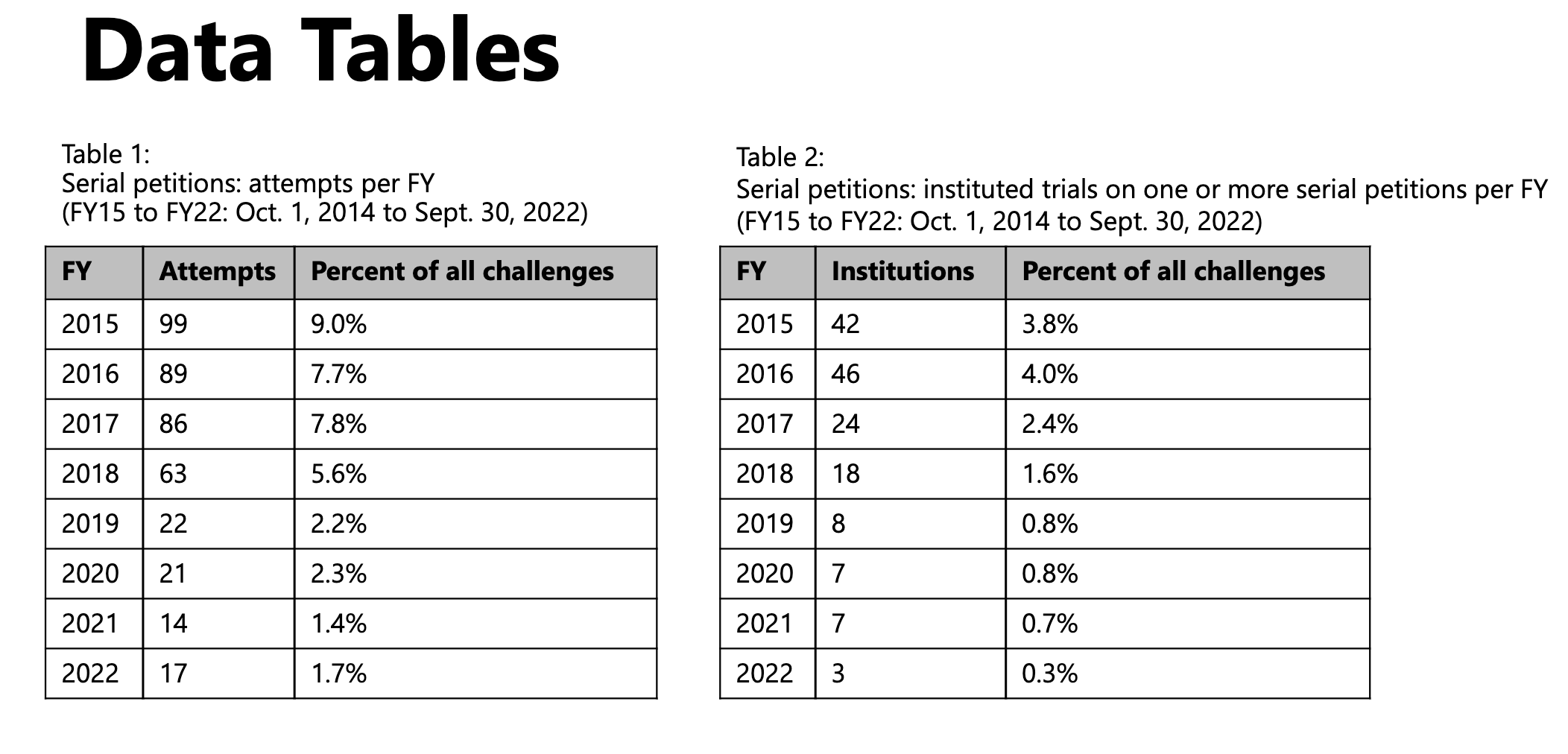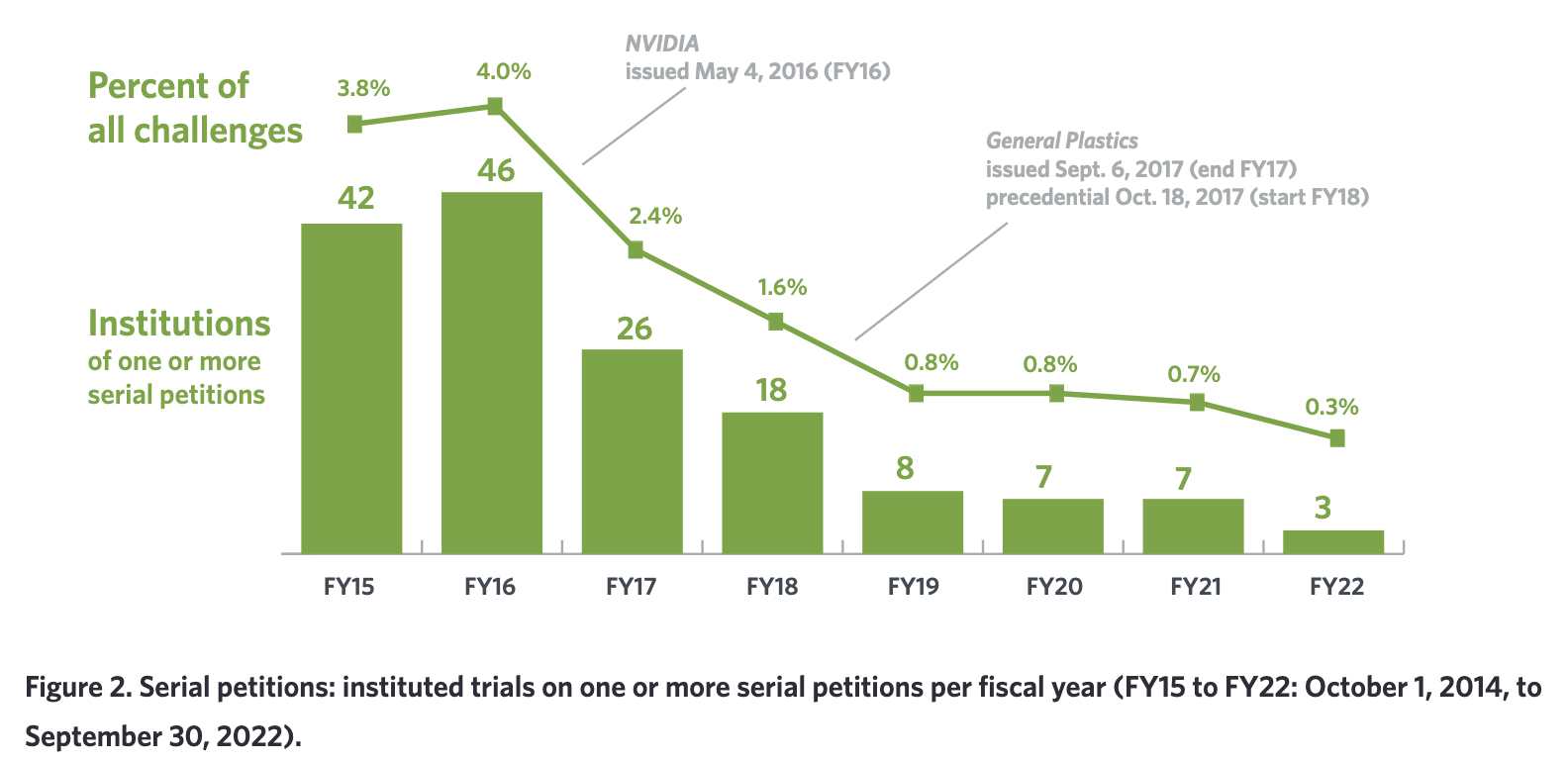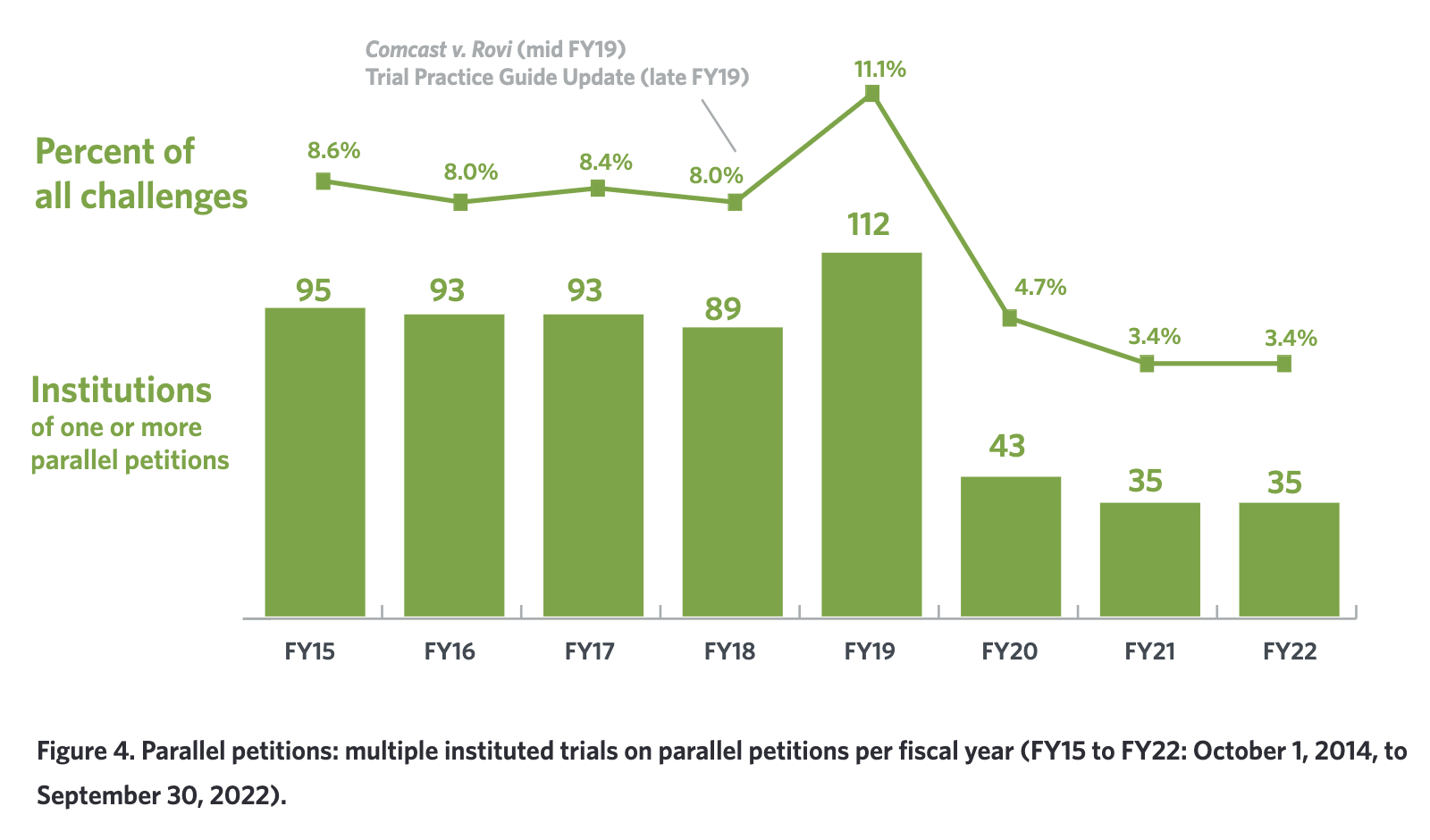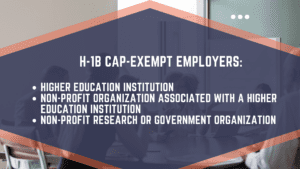USPTO Says Serial and Parallel PTAB Petitions Have Declined
“Since the guidance, said the USPTO in a press release today, ‘petitioners have filed fewer multiple petitions, and the PTAB has instituted fewer AIA trials based on such petitions, and only under certain circumstances.’”
The United States Patent and Trademark Office (USPTO) has released an update to its study on multiple Patent Trial and Appeal Board (PTAB) petitions under the America Invents Act (AIA) that it says demonstrates that serial and parallel petition practice at the PTAB has been decreasing since 2016, when the Office first issued guidance on the subject.
Serial petitions are characterized as petitions filed to challenge the same patent more than 90 days after the initial petition, while parallel petitions are those filed 90 days or fewer apart. The report determined the total number of challenges in each fiscal year by looking at how many times a particular petitioner challenged claims of a particular patent.
An appendix to the report notes that the methodology for this latest update has changed compared to previous versions:
“In the updated method, the number of challenges is the number of times one petitioner challenged one patent in a fiscal year, only looking at those challenges that received a decision to institute. The fiscal year is calculated from the decision to institute date unless there was a request for rehearing decision that granted a request for rehearing of a decision denying institution, in which case the date of the request for rehearing was used.”
Previously, the total challenges were determined by adding up the number of serial petitions, parallel petitions, and single petitions in each FY which led to some petitions being counted more than once for a given fiscal year, which was determined by the decision to institute date, not the filing date. “So in some cases, petitions in a family of serial or parallel petitions crossed FY boundaries and were counted as a challenge for two FYs in the challenges column, but only once in the attempt or instituted column,” wrote the USPTO.
Using the updated methodology, according to the latest USPTO data, of the 1,000 PTAB challenges filed in fiscal year 2022, “90% of all challenged patents involved only one or two petitions filed by any challenger, and 72% were challenged only once; 17 patents (1.7% of all challenges) involved serial petitions filed by the same petitioner; of those only 3 (0.3% of all challenges) led to institution based on a serial petition; and 76 patents (about 7.5% of all challenges) involved a parallel petition attempt by the same petitioner; of those, 35 attempts (3.4% of all challenges) led to institution on parallel petitions.”
Source: USPTO Report
According to the report, following NVIDIA Corp. v. Samsung Elecs. Co., IPR2016-00134, Paper 9, at 7 (FY 2016) and General Plastic Indus. Co., Ltd. v. Canon Kabushiki Kaisha, IPR2016-01357, Paper 19, at 7 (precedential, FY 2018), serial petition filing attempts “markedly decreased” from 99 attempts in fiscal year 2015 to 17 attempts in fiscal year 2022. The number of instituted AIA trials based on serial petitions also declined from 46 institutions (4% of all challenges to a patent by a petitioner) in fiscal year 2016 to only 3 institutions (0.3% of all challenges to a patent by a petitioner) in fiscal year 2022.
Source: USPTO Report
And following Comcast Cable Commc’ns, LLC v. Rovi Guides, Inc., IPR2019-00224, Paper 10 (PTAB Apr. 3, 2019) and the July 2019 Trial Practice Guide Update, parallel petition filings fell from a high of 206 attempts representing about 20% of all challenges in fiscal year 2019 to a low of 76 attempts representing about 7% of all challenges in fiscal year 2022. The number of groups of parallel petitions resulting in multiple instituted trials also declined from a high of 112 institutions (about 11% of challenges to a patent by a petitioner) in fiscal year 2019 to a low of 35 petitions (about 3.4% of challenges to a patent by a petitioner) in both fiscal years 2021 and 2022.

Overall, since the guidance, said the USPTO in a press release today, “petitioners have filed fewer multiple petitions, and the PTAB has instituted fewer AIA trials based on such petitions, and only under certain circumstances.”


Source: USPTO Appendix
IPWatchdog has reported previously on problems with the USPTO’s approach to assessing multiple petitions in past studies. In 2018, IPWatchdog Founder and CEO Gene Quinn wrote:
“Despite the extraordinary number of duplicative petitions, the USPTO continues to say there is not a real problem with serial, sequential or a multiplicity of challenges…. The USPTO convinces itself that there is not much of a problem here because 67% of patents are only challenged once, and 20.2% of patents are challenged twice, so 87.2% of patents are challenged only once or twice. See The Real IPR Gauntlet. But by the USPTO’s own admission there are patents that are challenged 3, 4, 5, 6, and even 7 or more times. And the reality the USPTO misses is when the challenge is successful the first time there is no need for a second or subsequent challenge. So, citing to patents that fall at the PTAB in the first challenge does nothing to change the reality that there are patent owners that are being harassed by a multiplicity of filings at the PTAB.
“How many patents which survive their first IPR are subsequently left alone?” asked Aaric Eisenstein in his 2018 article, “The Real IPR Gauntlet” (linked above). “How many are subjected to yet another IPR? Worse still, how many patents are IPR’d to death rather than ever being granted quiet title?”
According to today’s announcement, the Office “will use the results of this study, other PTAB statistics, and stakeholder feedback to help inform important reforms we are currently considering.” The USPTO is currently assessing more than 14,000 comments received in response to its Advance Notice of Proposed Rulemaking on various PTAB practices.
An Executive Summary of the report is also available here.
Eileen McDermott
Eileen McDermott is the Editor-in-Chief of IPWatchdog.com. Eileen is a veteran IP and legal journalist, and no stranger to the intellectual property world, having held editorial and managerial positions at […see more]











